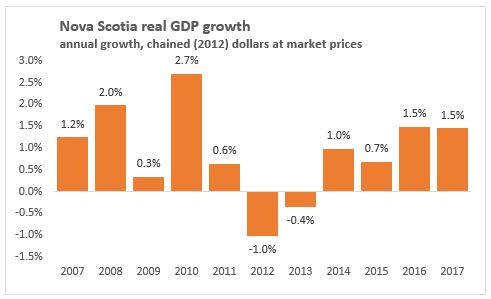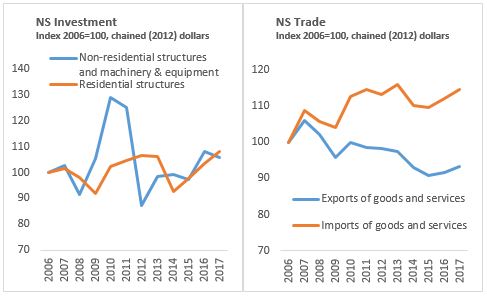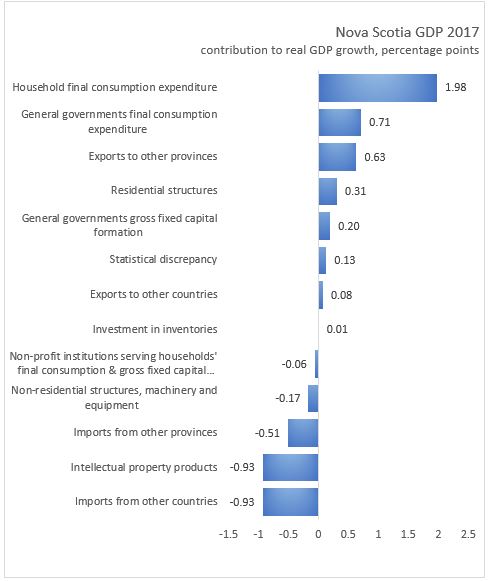The Economics and Statistics Division maintains archives of previous publications for accountability purposes, but makes no updates to keep these documents current with the latest data revisions from Statistics Canada. As a result, information in older documents may not be accurate. Please exercise caution when referring to older documents. For the latest information and historical data, please contact the individual listed to the right.
<--- Return to Archive
For additional information relating to this article, please contact:
November 08, 2018PROVINCIAL ECONOMIC ACCOUNTS 2017 - NOVA SCOTIA TRENDS The Nova Scotia economy has grown for four consecutive years after declines in 2012 and 2013. Real GDP increased by 1.5 per cent in 2017 following on growth of 1.5 per cent in 2016 and 0.7 per cent in 2015.

Real household consumption increased 2.8 per cent in 2018, the fastest pace since 2008. Rising motor vehicle purchases lifted durable good expenditures by 7.3 per cent and services (+2.1%) expenditures were faster than the previous four years. Government consumption expenditures rose 2.1 per cent in 2017 and government fixed capital formation was up 4.2 per cent after a 5.0 per cent increase in 2016.

Residential structures growth continued for a third year with a gain of 4.6 per cent in real activity. Non-residential structures (-1.1%) declined in 2017 after three years of growth with the completion of Tuoquoy gold mine and the convention centre in Halifax in 2016. The volume of exports was up 1.9 per cent in 2017 with higher exports to other provinces and services exports to international markets while goods exports to international markets declined 0.3 per cent. Imports of goods and services grew 2.2 per cent led by an increase of imported goods from other countries.

For 2017, the largest positive contributions to GDP came from increases in household consumption (+1.98%), government final consumption (+0.71%), exports to other provinces (+0.63%) and residential structures (-0.31%). Offsetting contribution to real GDP occurred due to higher imports (-1.44) and a decline in intellectual property products (-0.93%) compared to 2016.

<--- Return to Archive